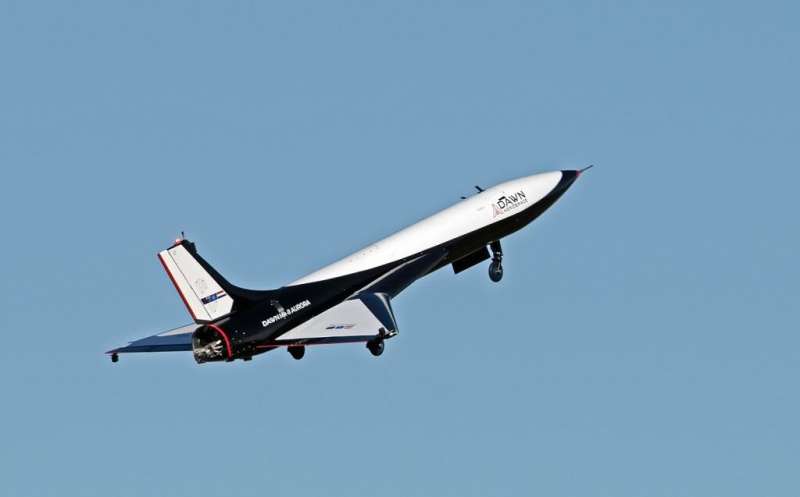And it allowed the company to make a video with very catchy music they could share for their marketing campaign.
The Mk II is a drone with no direct pilot in the cockpit, which has plenty of advantages, mainly due to decreases in the project's physical weight and the testing necessary to certify a vehicle for crewed flight. Unfortunately, that also means that Dawn will only be able to launch cargo rather than taking people into orbit, at least with the current iteration.
Like many companies, Dawn has a phased approach to starting their commercial launch operations. These tests represent the beginning of the Mk II Aurora, which will eventually be able to fly up to 100 km to deposit payloads, then return to its runway, and repeat the process the same day. It hopes to be the first vehicle to be able to do so.
On the other hand, Mk III will include a non-reusable second stage that will help lift payloads of up to a ton into suborbital flight and 250kg into orbit itself. Its plane-based first stage will again be reusable, but the second stage will be lost.
If that business model sounds suspiciously like the recently bankrupted Virgin Orbit, that's because it is. Using a plane (which in Virgin Orbit's case was air-launched) to get relatively small payloads into orbit has been a common goal of several companies as they attempt to make access to space cheaper by making the vehicles that get there reusable. In this case, Dawn has succeeded where Virgin Orbit failed.
It still has plenty of testing and development left to go before it can hit either the Mk II or III milestone, but this first rocket-powered test is a step in the right direction. And with this success, the country of New Zealand seems to be moving up in the list of the most consequential global powers in the race to decrease the cost of access to space.
Provided by Universe Today



